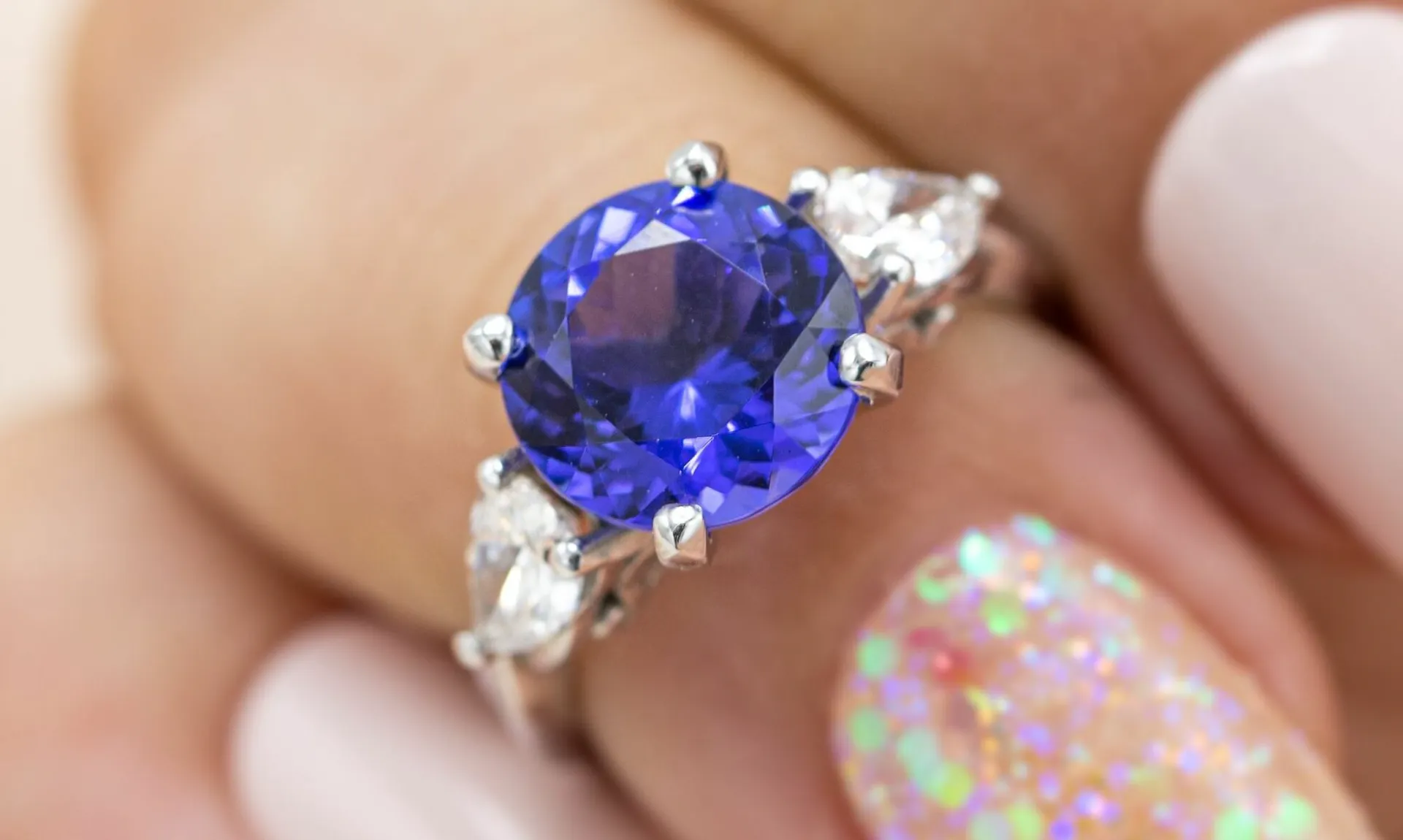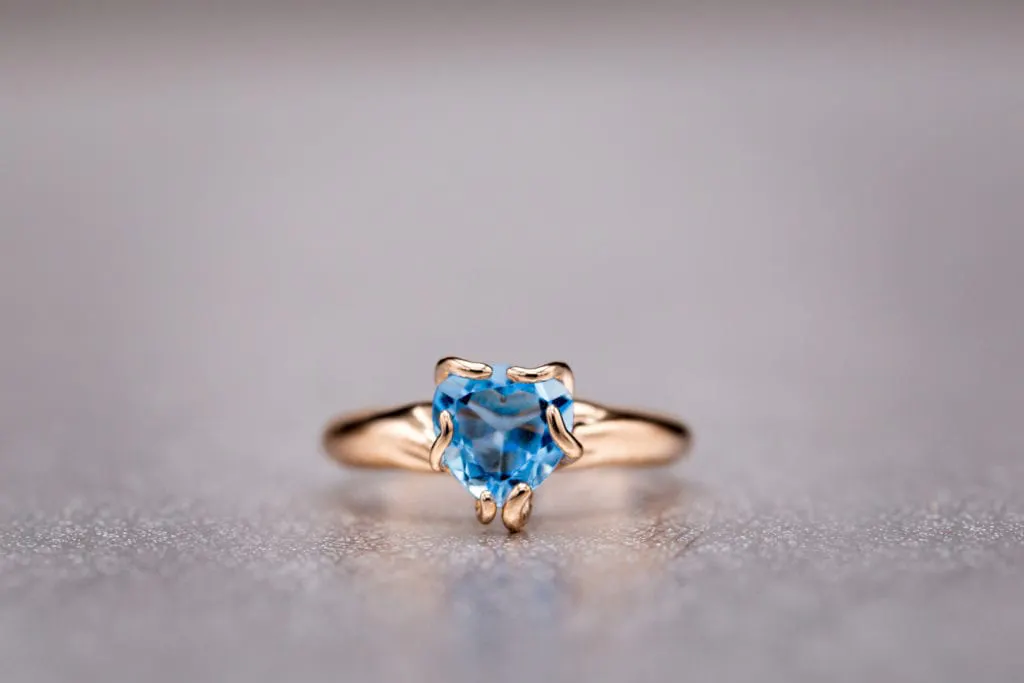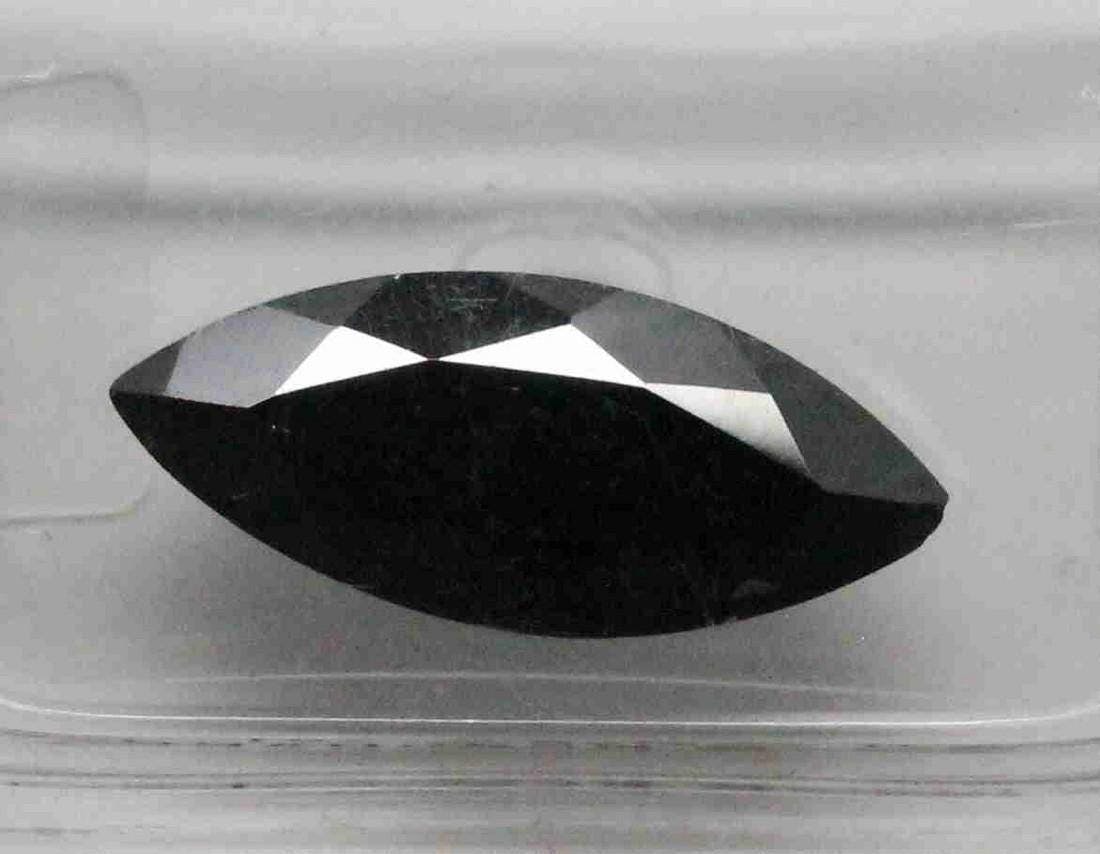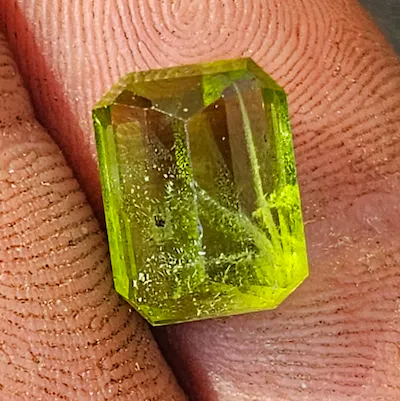News
Top 10 Blue Gemstones for Stunning Jewelry
Looking to add a touch of elegance and sophistication to your jewelry collection? Look no further than blue gemstones, which have long been a favorite choice for jewelry enthusiasts. Representing the calming and serene qualities of the sea and sky, blue gemstones are prized for their mesmerizing hues and stunning beauty. When it comes to assessing the quality of these gemstones, gemologists consider factors such as color, clarity, and their suitability for different types of jewelry. From the classic sapphire to the unique jeremejevite, the top 10 blue gemstones offer a variety of options for creating breathtaking pieces. While some are perfect for everyday wear, others are best reserved for special occasions. So whether you’re looking for the perfect pair of earrings or a dazzling pendant, these blue gemstones are sure to leave you captivated.
Sapphire
Properties and Characteristics
Sapphire is a precious gemstone known for its striking blue color. It belongs to the corundum mineral family, which is also the same family that includes rubies. The beautiful blue color of sapphire is due to the presence of iron and titanium within the gemstone. Sapphires can come in various shades of blue, ranging from light blue to deep, vivid blue. The gemstone has an excellent hardness of 9 on the Mohs scale, which makes it highly durable and suitable for everyday wear.
Uses in Jewelry
Sapphires are widely used in jewelry and are especially popular in engagement rings and other pieces of fine jewelry. The gemstone’s stunning blue color adds an elegant touch to any piece of jewelry. Sapphires are often used as center stones in rings, but they can also be set as side stones or accents in intricate designs. The versatility of sapphires allows them to be used in various jewelry styles, from classic to contemporary.
Famous Sapphire Jewelry
Several famous pieces of jewelry feature sapphires, making them highly sought after by collectors and enthusiasts alike. One iconic example is the engagement ring worn by the late Princess Diana, which now adorns the finger of the Duchess of Cambridge, Kate Middleton. The ring features a stunning oval sapphire surrounded by diamonds. Another renowned sapphire jewelry piece is the Stuart Sapphire, which is set in the British Imperial State Crown. This historical treasure dates back to the 17th century and has been worn by numerous monarchs throughout history.
Tourmaline
Properties and Characteristics
Tourmaline is a gemstone known for its remarkable variety of colors, including beautiful shades of blue. It is a complex aluminum borosilicate mineral that can exhibit a broad spectrum of colors due to the presence of various trace elements. Blue tourmalines can range from pale, almost transparent shades to deep, rich blues. The hardness of tourmaline varies depending on its composition, but it generally ranges between 7 and 7.5 on the Mohs scale.
Uses in Jewelry
Blue tourmalines are highly desired in the world of jewelry due to their captivating color and unique properties. They are often cut into various shapes and used as center stones in rings, pendants, and necklaces. Tourmalines are also popular for creating one-of-a-kind statement jewelry pieces. Their availability in a wide range of shades makes them versatile for designing both classic and contemporary jewelry.
Famous Tourmaline Jewelry
One notable example of famous tourmaline jewelry is the famous “Empress Dowager Tzu Hsi’s Tourmaline Necklace.” This stunning piece was crafted in the 19th century and features a combination of blue and pink tourmalines. The necklace showcases the versatility and beauty of blue tourmaline when combined with other gemstones.

Aquamarine
Properties and Characteristics
Aquamarine is a gemstone that derives its name from the Latin word for “water of the sea.” It is a variety of the mineral beryl and is prized for its captivating blue color. Aquamarine stones can range in color from pale blue to a deeper, more intense blue shade. The gemstone is often valued for its clarity, and high-quality aquamarines are usually transparent with minimal inclusions. Aquamarine has a hardness of 7.5 to 8 on the Mohs scale.
Uses in Jewelry
Aquamarine’s beautiful blue hue and clarity make it a popular choice for various jewelry pieces. The gemstone is often used in rings, earrings, necklaces, and bracelets. Aquamarine stones can be cut into a variety of shapes, including round, oval, and pear, allowing for different and unique jewelry designs. Aquamarine jewelry pairs beautifully with both silver and gold settings, making it a versatile choice for any style.
Famous Aquamarine Jewelry
One famous piece of aquamarine jewelry is the Aquamarine Tiara, which is part of the Swedish Royal Family’s collection. The tiara features aquamarines set in an intricate design of flowers and leaves. Another notable aquamarine jewelry piece is the “Duchess of Windsor Aquamarine Bracelet.” This exquisite bracelet showcases large aquamarine stones surrounded by diamonds and is a beloved piece of the Duchess’ jewelry collection.
Spinel
Properties and Characteristics
Spinel is a gemstone that comes in a variety of colors, including shades of blue. Blue spinels can range in color from pale blue to a vibrant, intense blue. What distinguishes spinel from other blue gemstones is its high clarity and brilliance. It has a hardness of 8 on the Mohs scale, making it a durable gemstone suitable for everyday wear.
Uses in Jewelry
Blue spinels are popular gemstones for jewelry due to their exceptional beauty and durability. They can be cut into various shapes, including round, oval, and cushion, to create stunning centerpieces in rings or pendants. Blue spinels are often used in combination with diamonds or other gemstones to create unique and eye-catching designs. Their vibrant blue color adds an element of elegance and sophistication to any piece of jewelry.
Famous Spinel Jewelry
One famous example of spinel jewelry is the “Black Prince’s Ruby,” which is not actually a ruby but a spinel. This historic gemstone is set in the Imperial State Crown of England and has a rich red color with hints of blue. Another renowned spinel jewelry piece is the “Timur Ruby,” a massive blue spinel that weighs over 360 carats and is part of the British Royal Collection.

Turquoise
Properties and Characteristics
Turquoise is a gemstone that has been prized for centuries for its unique blue-green color. It is a hydrated phosphate mineral that is typically opaque and has a waxy luster. Turquoise gets its color from the presence of copper within the stone. The hardness of turquoise ranges from 5 to 6 on the Mohs scale, making it relatively soft compared to other gemstones.
Uses in Jewelry
Turquoise has long been used in jewelry, dating back to ancient civilizations such as the Egyptians and Persians. Its distinctive blue-green color adds a pop of color and a bohemian vibe to any piece of jewelry. Turquoise is commonly used in necklaces, bracelets, earrings, and rings. It is often set in silver to enhance its vibrant color and create a contrast in the design.
Famous Turquoise Jewelry
One famous turquoise jewelry piece is the “Crown of the Andes,” which is a stunning colonial-style crown decorated with hundreds of turquoise gemstones. This historical piece is believed to have protected the wearer from harm and is considered a priceless artifact. Another notable turquoise jewelry piece is the “Turquoise Mountain Necklace” designed by American jewelry artist, Jesse Monongya. This necklace showcases the beauty of turquoise in a contemporary and artistic way.
Blue Diamond
Properties and Characteristics
Blue diamonds are one of the rarest and most valuable gemstones in the world. The blue color in diamonds is the result of the presence of boron during the formation process. Blue diamonds can range in color from a pale blue to a deep, vivid blue with a saturation that can be compared to the color of the ocean. The hardness of diamonds is 10 on the Mohs scale, making them the hardest gemstone.
Uses in Jewelry
Blue diamonds are highly sought after for their exquisite and unique beauty. They are often used as center stones in engagement rings and other high-end jewelry pieces. Blue diamonds can also be used as accents in diamond jewelry, adding a touch of color and rarity. Due to their rarity, blue diamonds are considered prestigious and are a symbol of luxury and wealth.
Famous Blue Diamond Jewelry
The most famous blue diamond is the “Hope Diamond,” known for its deep blue color and rich history. This legendary diamond is believed to have originated from India and has been worn by royalty throughout centuries. Another renowned blue diamond is the “Blue Moon Diamond,” which achieved a world record price at an auction. This breathtaking gemstone weighs over 12 carats and displays an intense blue hue.
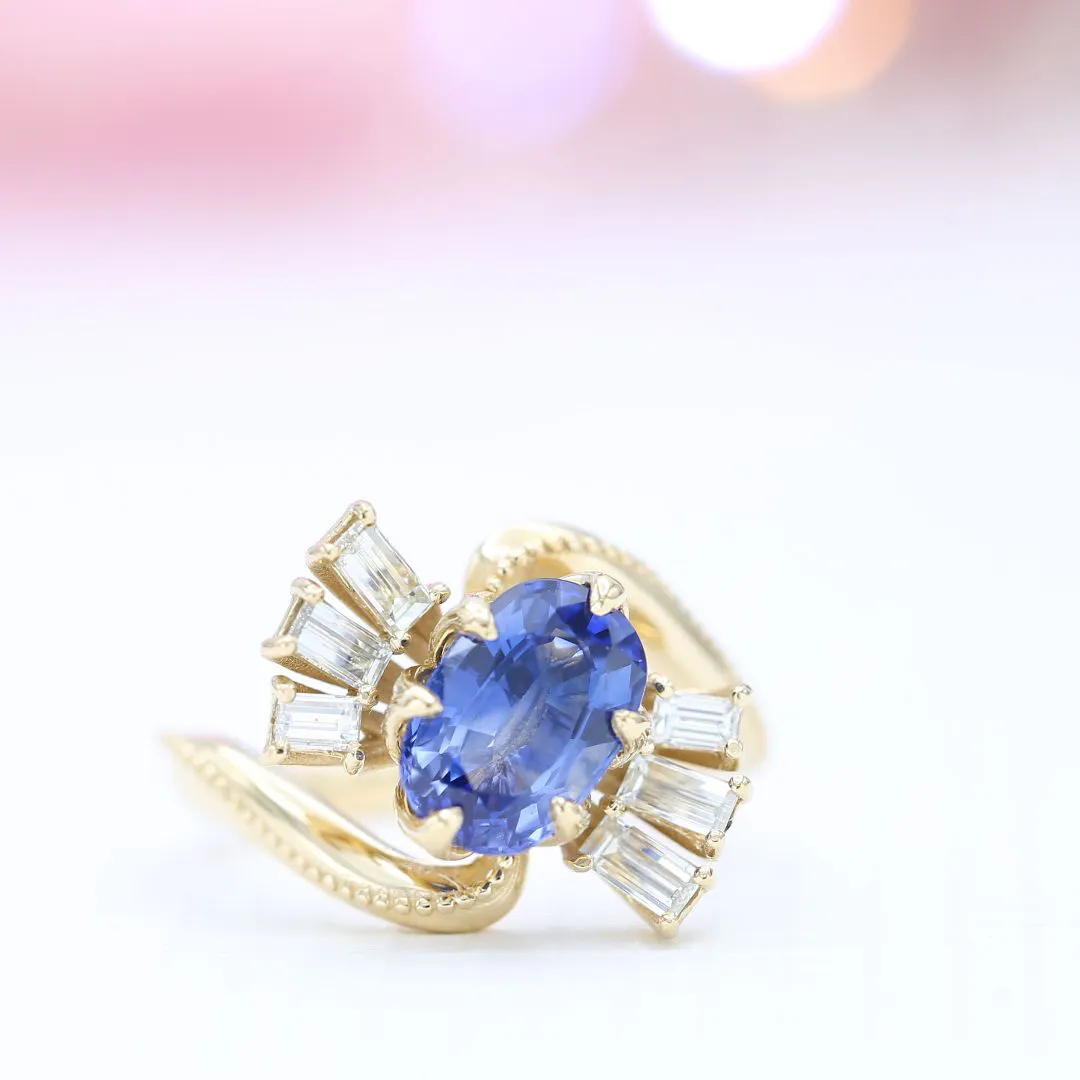
Chalcedony
Properties and Characteristics
Chalcedony is a microcrystalline form of quartz that comes in various colors, including delicate shades of blue. Blue chalcedony is known for its soothing and calming energy. It has a smooth and waxy appearance and is often translucent. The hardness of chalcedony ranges from 6.5 to 7 on the Mohs scale.
Uses in Jewelry
Blue chalcedony is popular in jewelry due to its soft and subtle color. It is often cut and polished into cabochons or beads and used in necklaces, earrings, and bracelets. The smooth and serene appearance of blue chalcedony lends itself well to bohemian or minimalist jewelry designs. It is an ideal gemstone for those who prefer a more understated and delicate look.
Famous Chalcedony Jewelry
Although blue chalcedony may not be as widely recognized as other gemstones, it has been used in numerous historical jewelry pieces throughout the ages. Chalcedony beads have been found in ancient Egyptian jewelry, and the gemstone’s calming properties have made it a popular choice for spiritual and holistic jewelry designs.
Jeremejevite
Properties and Characteristics
Jeremejevite is an extremely rare gemstone that can come in various shades of blue, ranging from pale blue to a vibrant sapphire-like blue. It was first discovered in Siberia in 1883 and named after the Russian mineralogist Pavel Vladimirovich Eremeev. Jeremejevite has a hardness of 6.5 to 7.5 on the Mohs scale, making it suitable for jewelry.
Uses in Jewelry
Due to its scarcity, jeremejevite is a gemstone that is rarely used in mainstream jewelry. However, it is highly favored by collectors and enthusiasts for its unique and vibrant blue color. Jeremejevite can be cut into various faceted shapes to create dazzling center stones in rings or pendants. Its rarity and exquisite color make it a prized possession for those seeking something truly unique.
Famous Jeremejevite Jewelry
As jeremejevite is an extremely rare gemstone, there are not many examples of famous jewelry pieces featuring this gemstone. However, its scarcity and allure have contributed to its desirability among gemstone collectors and connoisseurs.
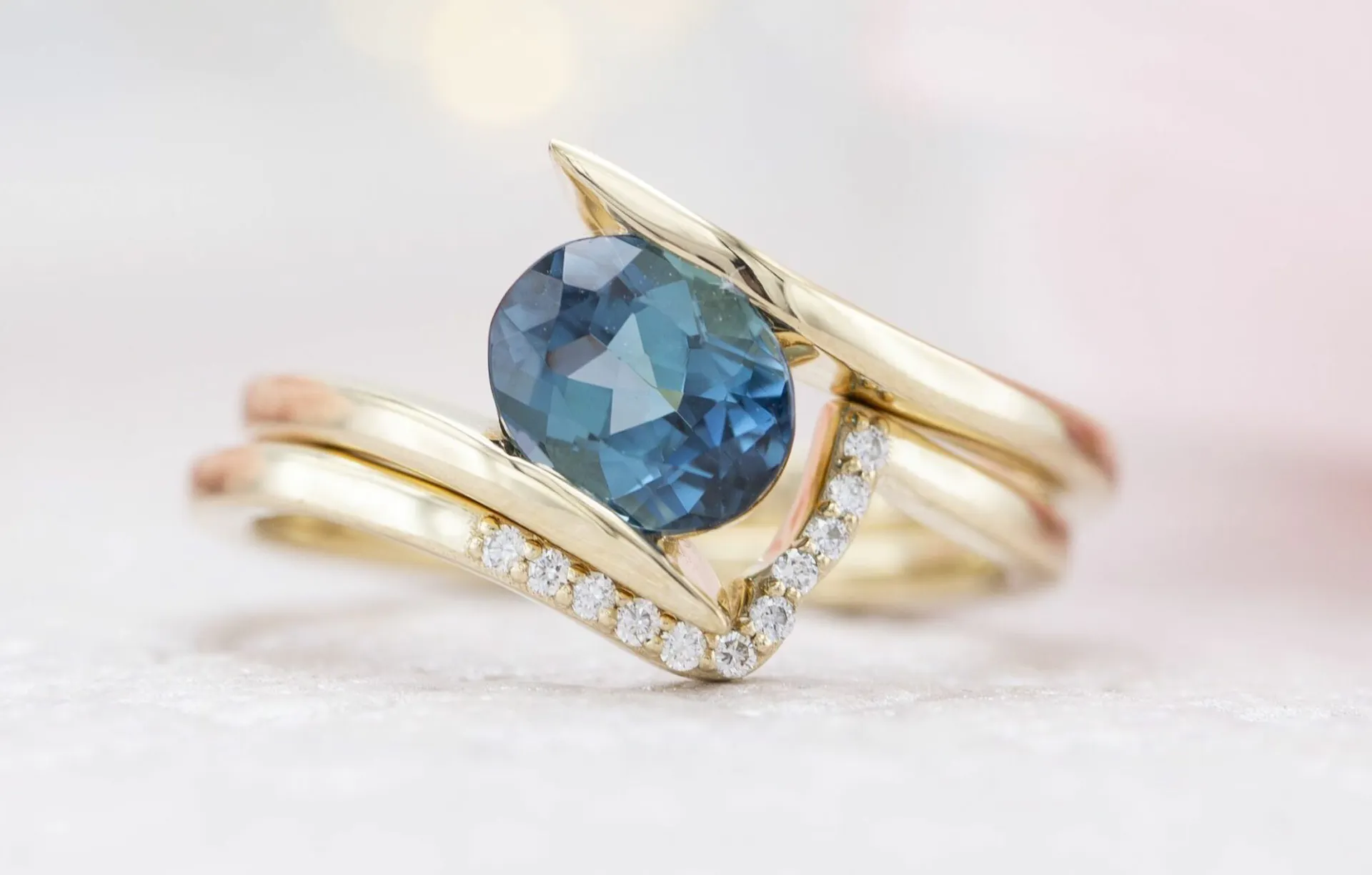
Dumortierite
Properties and Characteristics
Dumortierite is a gemstone that comes in various shades of blue, ranging from a pale, denim-like blue to a deep, vibrant blue. It is a fibrous mineral that belongs to the quartz family. Dumortierite often exhibits a silky luster and can have chatoyant properties, displaying a cat’s-eye effect when properly cut and polished. It has a hardness of 7 on the Mohs scale.
Uses in Jewelry
Blue dumortierite is used in jewelry for its unique and eye-catching blue color. Its fibrous structure allows it to be cut into cabochons or beads, which are then used in bracelets, necklaces, and earrings. Dumortierite’s silky luster adds an additional dimension to jewelry designs, creating a play of light and enhancing the gemstone’s natural beauty.
Famous Dumortierite Jewelry
While there may not be many famous jewelry pieces that specifically feature dumortierite, its distinct blue hue and chatoyant effects make it a gemstone that stands out in various jewelry designs. Its unique characteristics appeal to those seeking a gemstone that offers something different and captivating.
Blue Jadeite
Properties and Characteristics
Blue jadeite is a rare and valuable gemstone known for its vibrant blue color. Jadeite is one of the two minerals commonly referred to as jade, with the other being nephrite. It is highly prized for its intense blue color, which results from the presence of trace elements in the mineral. Jadeite has a hardness of 6.5 to 7 on the Mohs scale.
Uses in Jewelry
Blue jadeite is treasured for its stunning color and is often used in high-end jewelry pieces. Its vibrant blue hue adds a touch of luxury and sophistication to any design. Blue jadeite is typically cut into cabochons or carved into intricate shapes to showcase its beauty. It is used in various types of jewelry, including rings, pendants, and bracelets.
Famous Blue Jadeite Jewelry
One famous example of blue jadeite jewelry is the “Hutton-Mdivani Jadeite Necklace.” This necklace features a single strand of graduated blue jadeite beads and is considered one of the most iconic jadeite jewelry pieces. Another notable blue jadeite jewelry piece is the “Diana Jadeite Necklace.” This necklace was worn by Princess Diana and features a stunning heart-shaped blue jadeite pendant surrounded by diamonds.
Blue gemstones have always held a special allure due to their association with the sea and the sky. Their captivating blue colors evoke a sense of tranquility and elegance. Gemologists assess the quality of blue gemstones based on factors such as color, clarity, and their suitability for use in jewelry.
Sapphire, with its striking blue color, is a highly sought-after gemstone. It is known for its durability and versatility, making it a popular choice for engagement rings and other fine jewelry pieces. Some notable examples of sapphire jewelry include Princess Diana’s engagement ring and the Stuart Sapphire set in the British Imperial State Crown.
Tourmaline, another gemstone that comes in various colors, including blue, offers a wide range of shades and a distinct brilliance. Blue tourmalines are highly desired for their unique properties and are often incorporated into stunning jewelry designs. Empress Dowager Tzu Hsi’s Tourmaline Necklace is a famous example of blue tourmaline jewelry.
Aquamarine, as its name suggests, embodies the enchanting blue hues of the sea. This gemstone is known for its clarity and delicate color. Aquamarine jewelry is versatile, suitable for a variety of designs, and can be set in both silver and gold settings. The Aquamarine Tiara and the Duchess of Windsor Aquamarine Bracelet are examples of famous aquamarine jewelry.
Spinel, though available in a spectrum of colors, includes stunning shades of blue. Blue spinels stand out for their clarity and brilliance. They are often used as centerpieces in rings or pendants, either on their own or in combination with other gemstones. The Black Prince’s Ruby and the Timur Ruby are renowned spinel jewelry pieces.
Turquoise, a gemstone with a rich history, is known for its distinctive blue-green color. It has been used in jewelry for centuries and adds an earthy and bohemian touch to any design. Turquoise is popular in necklaces, bracelets, and earrings, and is often paired with silver settings.
Blue diamonds, one of the rarest and most valued gemstones, stand out for their intense blue color. They are a symbol of luxury and are often used as center stones in high-end jewelry pieces. The Hope Diamond and the Blue Moon Diamond are examples of famous blue diamond jewelry.
Chalcedony, a quartz variety, includes blue gemstones that possess a calming energy. Blue chalcedony is often used in delicate and minimalist designs, capturing a softer and more subtle blue hue. While not as widely recognized as other gemstones, chalcedony has been used in ancient Egyptian jewelry and continues to be valued for its spiritual properties.
Jeremejevite, an extremely rare gemstone, offers shades of blue that range from pale to sapphire-like blue. Due to its scarcity, this gemstone is highly coveted by collectors and enthusiasts. Jeremejevite is often cut into faceted shapes and used as center stones in rings or pendants.
Dumortierite, with its unique fibrous structure and distinct blue color, is treasured for its visual appeal. It is used in various forms of jewelry, including cabochons and beads, to showcase its silky luster. Dumortierite’s specific characteristics make it a gemstone that stands out in jewelry designs.
Blue jadeite, a rare and valuable gemstone, is prized for its intense blue color. It is often used in high-end jewelry pieces, including necklaces and bracelets. The Hutton-Mdivani Jadeite Necklace and the Diana Jadeite Necklace are examples of renowned blue jadeite jewelry.
Overall, blue gemstones offer a wide range of options for jewelry enthusiasts. Each gemstone possesses its own unique properties and characteristics, allowing for endless possibilities in jewelry design. Whether it’s the deep blue of a sapphire, the calming hues of aquamarine, or the vibrant shades of blue spinel, these gemstones capture the allure and beauty of the color blue.
